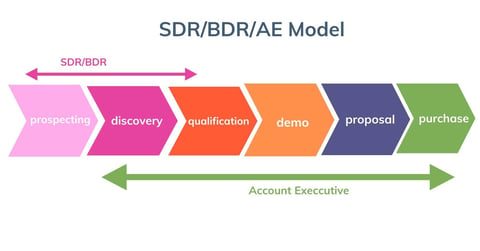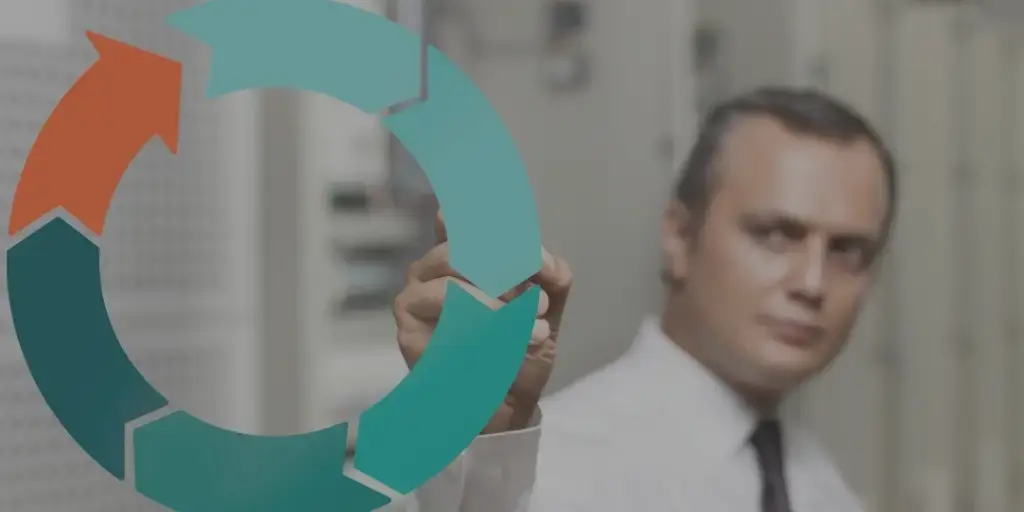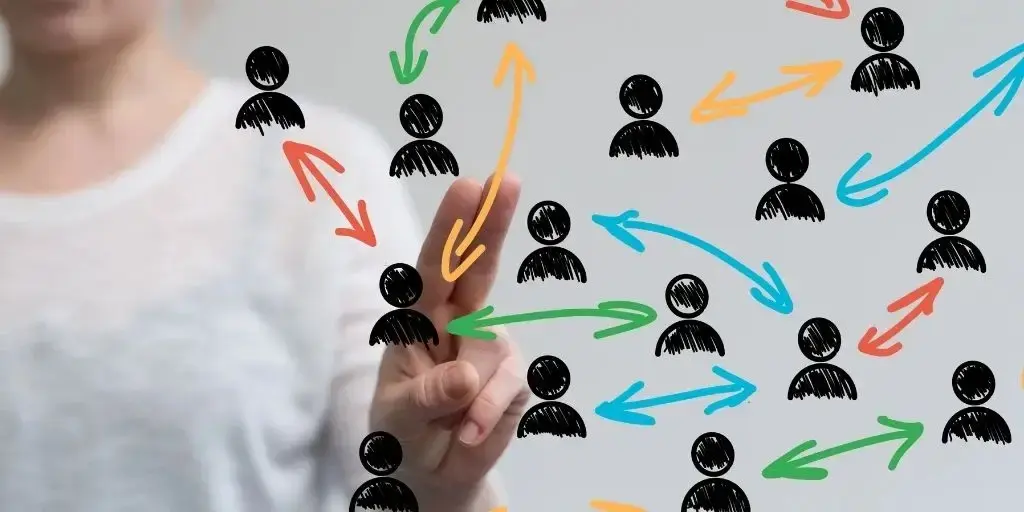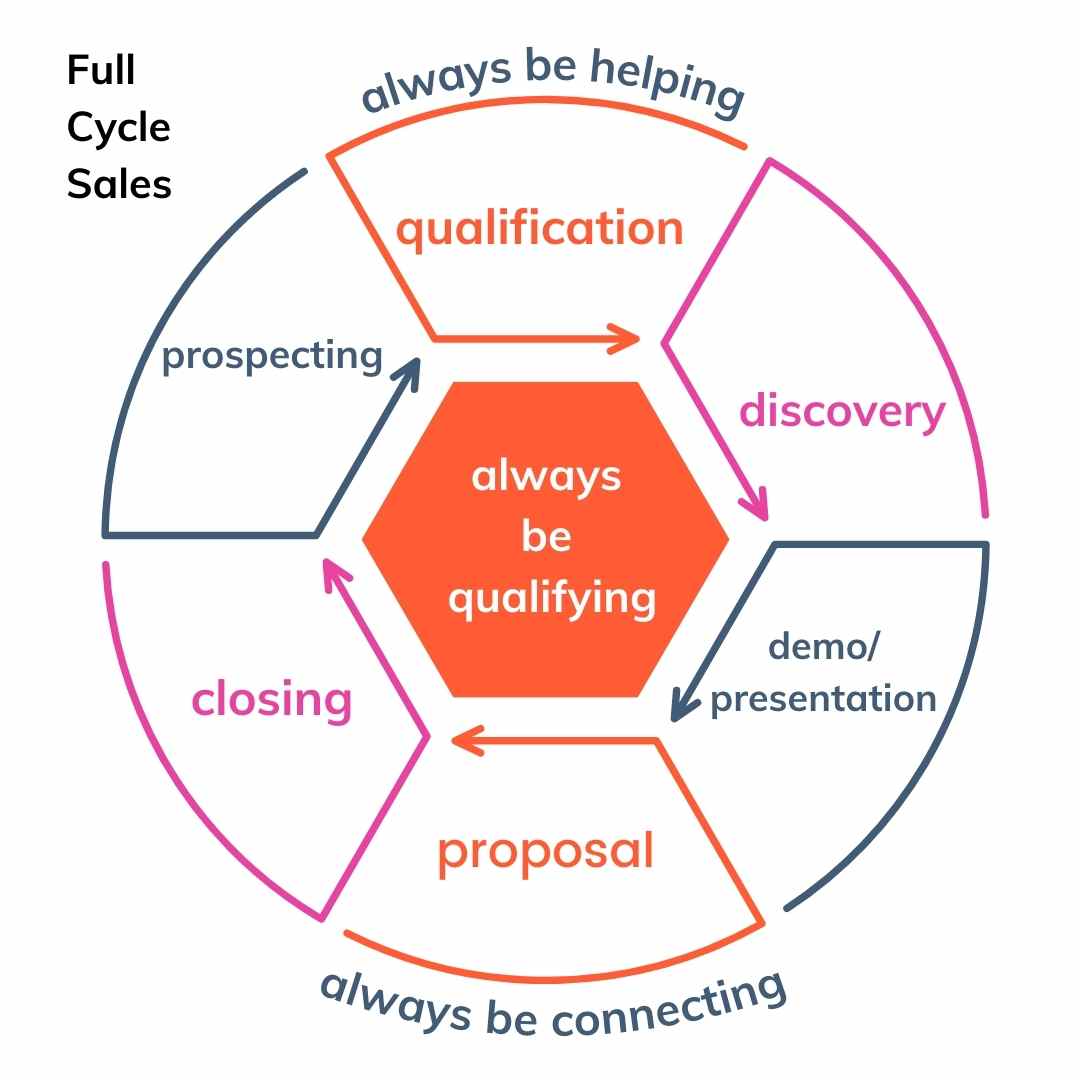What is full cycle sales?
Discover the Power of Full-Cycle Sales For some it might be a case of back to the future, for others it's a whole new world of possibilities, which...
.jpg)
What does full-cycle sales experience mean?
If you have just seen a sales role for an experienced full-cycle sales executive and you're wondering what that means? Well, this article is for you...
In the full-cycle sales model, junior reps get the opportunity to dive right in with selling simpler products and services, shorter sales cycles, and easier decision processes. And if they're feeling extra ambitious, they can even jump straight into high-end complex B2B Sales. In that case, they'll tag along with a seasoned senior salesperson and learn the ropes on the job. It's all about learning by doing.
These junior reps start with smaller deals and lower-value products, getting a taste of the thrill that comes with closing deals at their very first job.

By going through the whole shebang, from prospecting to closing, junior reps gain some serious street smarts and get a taste of the adrenaline rush that comes with sealing the deal on their first sales wins. Before you know it, they're falling head over heels for sales.
As they gain more experience, they can step out of the shadow of a senior rep and become independent quota carriers. After a year or two, they'll be ready to take on more complex solutions, whether it's with the same company or a new one.
On the flip side, the SDR/BDR/AE Model consists of the Sales Development Representatives (SDRs) or Business Development Representatives (BDRs), who are the worker bees behind sales prospecting. Unlike the sales executives (the deal-closing winners), SDRs take charge of reaching out to new leads, evaluating their potential, and nudging them further along the sales funnel before handing over to Account Executives (AE) to close.
The AE, being the more experienced player in the game, takes on the high-stakes deals. They identify customer needs, align products/services with their leads, and create a wave of excitement to seal the deal.
It's unfortunate how many serious challenges the SDR model is facing! From poor customer satisfaction rates to low sales staff retention rates, higher costs of SDRs and a failure to become customer-centric and align with the buyer's journey, the list goes on!
 It used to be the golden child in its early days, but now it's struggling to keep up in its more mature stage. Back then, junior SDRs could easily schedule meetings with a killer sales script because there wasn't as much competition for your buyer's attention. Customers actually had the time and patience to listen.
It used to be the golden child in its early days, but now it's struggling to keep up in its more mature stage. Back then, junior SDRs could easily schedule meetings with a killer sales script because there wasn't as much competition for your buyer's attention. Customers actually had the time and patience to listen.
But times have changed, as we all know! Customers are bombarded with endless sales emails, voicemails, and phone calls. They're tired of salespeople making big promises and trying to change their lives. They've become wise to these tactics and are cautious of many approaches that are used to catch their interest.
What's a better solution to increase overall sales team effectiveness?
Identify where you can leave a lasting impact and expand your market presence. Say goodbye to generic, cookie-cutter messages sent by inexperienced newcomers. Instead, focus on creating personalised, value-driven messages delivered by seasoned sales professionals.
For larger teams, consider bringing in dedicated sales support staff to maximise the time your top-performing sales professionals spend with clients and prevent any potential deals from slipping through the cracks.
Regardless of the size of your team, utilising a sales tool that harnesses Automation and AI, such as Sales Hub, can provide you with a competitive edge.

Positive Outlook: They have a strong ability to cope with ambiguity and are able to cope with high levels of stress.
Proactive Mindset: They are proactive and always on the lookout for new leads and ways to enhance the sales pipeline.
Resilience: Know that setbacks and rejections are common in the sales game, but top performers quickly bounce back, viewing challenges as opportunities for growth rather than obstacles.
Strong Communication Skills: Effective communication, both written and verbal, is crucial for building rapport with potential clients and navigating complex sales processes.
Competitive and Goal Orientated: They thrive on setting and achieving ambitious goals, constantly seeking ways to surpass targets and play a key role in driving the overall success of the sales team.
Time Management: Effectively managing multiple tasks and priorities is a key skill. They excel at prioritising activities to optimise productivity.
Adaptability: Industries, market conditions and client needs can shift swiftly. Top-performing SDRs/BDRs confidently adjust their strategies to remain ahead of the curve.
Empathy: Empathising with the customer's viewpoint and forging authentic connections aids in fostering long-lasting relationships, ultimately resulting in more successful sales outcomes.
Additionally, they regularly access sales training and adhere to best practices. We go into more detail in our blog article Beginners Guide to B2B Sales and Guide to Empowering your Sales Team through Training and Coaching
Successful full-cycle salespeople are not only adept at generating their own leads, but they excel in utilising social selling strategies to connect with prospects on various platforms. Their proven track record in social selling showcases their ability to build relationships, establish trust, and ultimately drive sales through online channels. Moreover, these sales professionals are not afraid to embrace sales automation tools, leveraging technology to streamline their processes and enhance efficiency. By harnessing the power of AI, they can analyse data, predict trends, and optimise their sales strategies to achieve higher productivity and success.
In addition, successful, experienced full-cycle salespeople understand the importance of follow-up in nurturing leads and closing deals. They have developed effective follow-up sequences that ensure they stay on top of their sales activities, maintaining consistent communication with prospects and guiding them through the sales process. Their strategic approach to follow-up sets them apart as proactive and persistent sales professionals who are dedicated to achieving results.
A full-cycle salesperson does not simply close deals, they play a vital role in the entire sales process, encompassing various stages from prospecting to closing the deal. They are responsible for identifying potential leads, qualifying them through thorough discovery and evaluation, delivering engaging presentations or demos to showcase the value of products or services, and skilfully negotiating terms to secure a successful sale. Moreover, some roles may extend to post-sale account management to ensure customer satisfaction and retention.
In today's B2B sales landscape, industries often require sales campaigns that leverage multiple channels such as emails, phone calls, and social media outreach. A deep understanding of social selling techniques is increasingly becoming essential for full-cycle sales professionals to effectively engage with prospects and nurture relationships online. With the ever-evolving digital landscape, staying abreast of the latest trends and technologies in sales is crucial for success in this role.
Typically full-cycle salespeople with 2 or more years of experience are measured on revenue from new business new logos and potentially margin. Performance may also be measured on any number of activities as per the chart below;

For more information about Big Business Agency’s cost-effective sales consulting services for B2B Sales teams, get in touch with our expert team and make a time to chat with us about implementing full cycle sales in your business or book a demo to see Sales Automation and Workflows in action.
To be successful, you need to meet all the criteria set out in the job description.
What will set you apart will be your ability to meet and exceed your goals and your ability to articulate how and why you won your bigger deals.
If you are considering transitioning from an SDR role to full-cycle sales, go for it! Experience requirements shouldn't hold you back.
Keep in mind that you may need to explore opportunities at smaller companies to find a role that aligns with your current skillset.
Sales jobs almost always have a portion of the salary at risk.
Sales compensation consists of a base wage and a variable commission amount. The split between the two is usually 70/30 or even 80/20, where the higher number signifies the base wage, and the lower number represents the portion of your package that is dependent on meeting targets.
For example, a 70/30 mix means that 70% of the total on-target earning is fixed base salary, and 30% of the total on-target earning is variable commission.
Make sure to check with HR or the hiring manager regarding the frequency of commission payments (once you become eligible for commission). Not every company pays commission monthly and if this is a an issue for you and might potentially influence your decision-making process, you should be aware of it early in the interview process.
Why not join us at SpokeSpeak? - a Sales and HubSpot focussed community that's open to HubSpot enthusiasts, experts and newbies as well as those of you who are simply Hub-curious 🤔
Check out the next episode at SpokeSpeak.com
Align your sales process with the buyer's journey
How full cycle sales reps are changing the role of sales
It's time for a new sales strategy plan
Only 63 selling days each quarter so minutes matter
Top 12 B2B Sales Methodologies

Discover the Power of Full-Cycle Sales For some it might be a case of back to the future, for others it's a whole new world of possibilities, which...

4 min read
Full-cycle sales model: Why it's so much better for customers

Curious about Full Cycle Sales? Full-cycle sales is a sales model that requires the salesperson to prospect all of their leads and manage the deal...